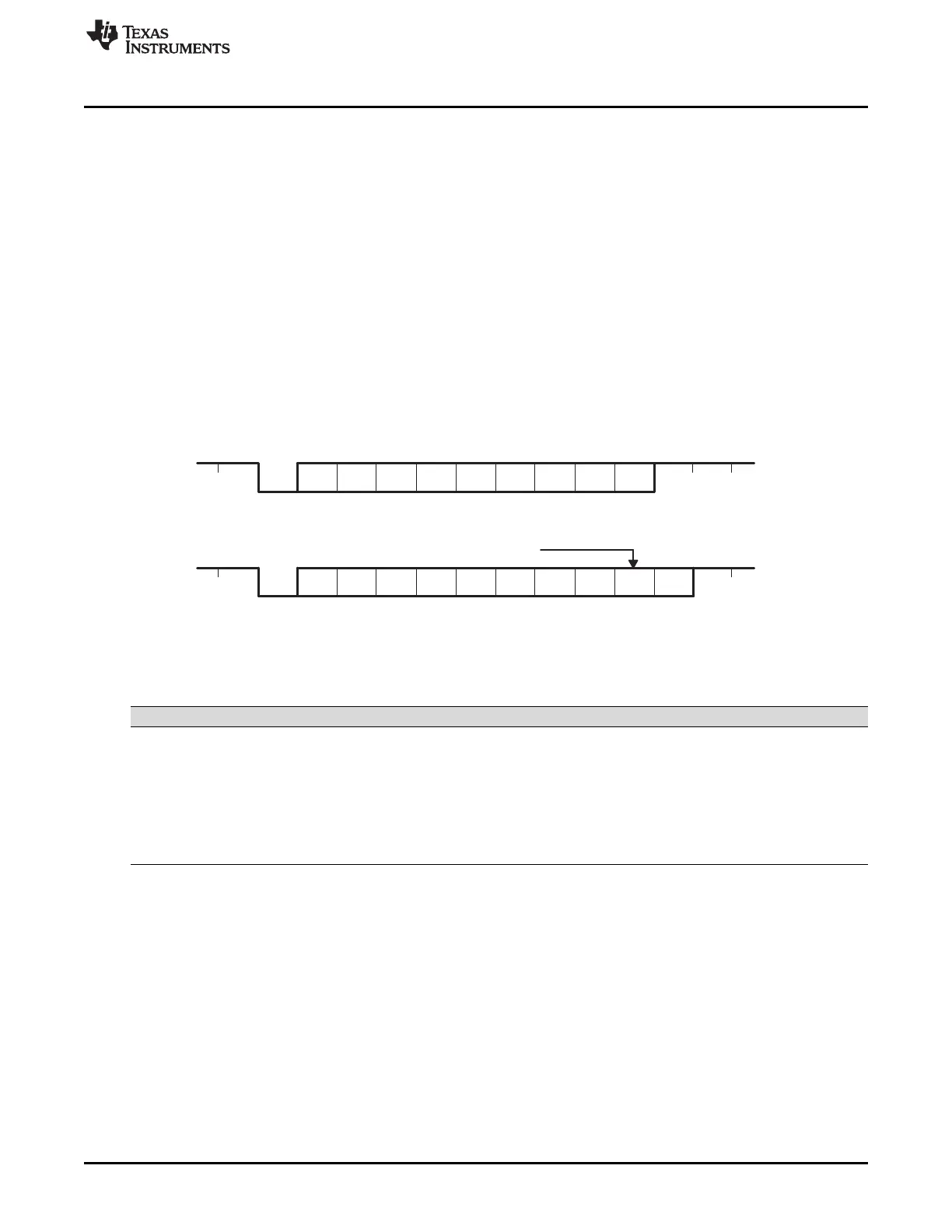Start LSB 2 3 Parity Stop4 5 6 7 MSB
Start LSB 2 3
Addr/
data
Parity
4 5 6 7 MSB Stop
Idle-line mode
(Normal nonmultiprocessor communications)
Address-bit mode
Address bit
www.ti.com
SCI Programmable Data Format
585
SPRUI07–March 2020
Submit Documentation Feedback
Copyright © 2020, Texas Instruments Incorporated
Serial Communications Interface (SCI)
• An even/odd parity bit or no parity bit
• One or two stop bits
10.6 SCI Programmable Data Format
SCI data, both receive and transmit, is in NRZ (non-return-to-zero) format. The NRZ data format, shown in
Figure 10-3, consists of:
• One start bit
• One to eight data bits
• An even/odd parity bit (optional)
• One or two stop bits
• An extra bit to distinguish addresses from data (address-bit mode only)
The basic unit of data is called a character and is one to eight bits in length. Each character of data is
formatted with a start bit, one or two stop bits, and optional parity and address bits. A character of data
with its formatting information is called a frame and is shown in Figure 10-3.
Figure 10-3. Typical SCI Data Frame Formats
To program the data format, use the SCICCR register. The bits used to program the data format are
shown in Table 10-2.
Table 10-2. Programming the Data Format Using SCICCR
Bit(s) Bit Name Designation Functions
2-0 SCI CHAR2-0 SCICCR.2:0 Select the character (data) length (one to eight bits).
5 PARITY SCICCR.5 Enables the parity function if set to 1, or disables the parity function
ENABLE if cleared to 0.
6 EVEN/ODD SCICCR.6 If parity is enabled, selects odd parity if cleared to 0 or even parity if
PARITY set to 1.
7 STOP BITS SCICCR.7 Determines the number of stop bits transmitted—one stop bit if cleared to 0 or two
stop bits if set to 1.
10.7 SCI Multiprocessor Communication
The multiprocessor communication format allows one processor to efficiently send blocks of data to other
processors on the same serial link. On one serial line, there should be only one transfer at a time. In other
words, there can be only one talker on a serial line at a time.
Address Byte
The first byte of a block of information that the talker sends contains an address byte that is read by all
listeners. Only listeners with the correct address can be interrupted by the data bytes that follow the
address byte. The listeners with an incorrect address remain uninterrupted until the next address byte.

